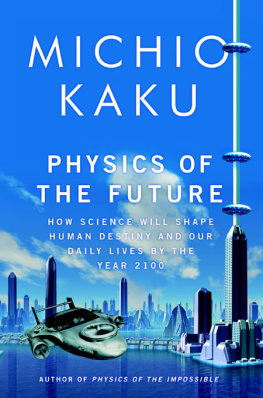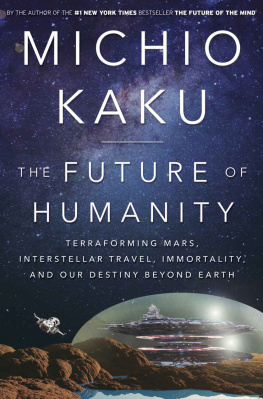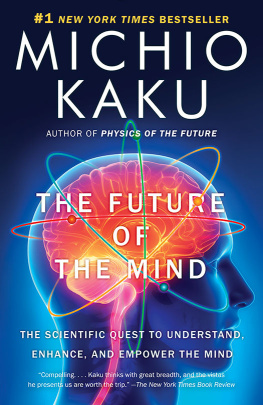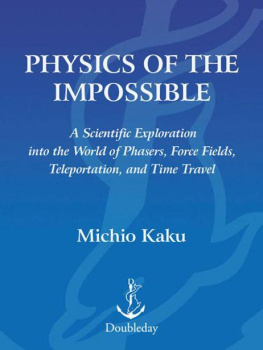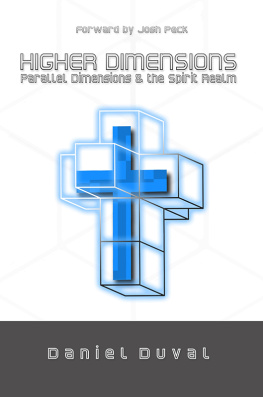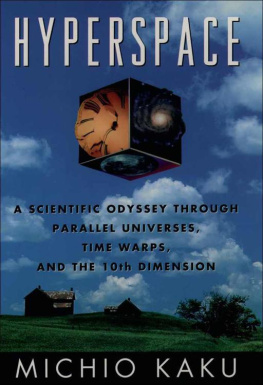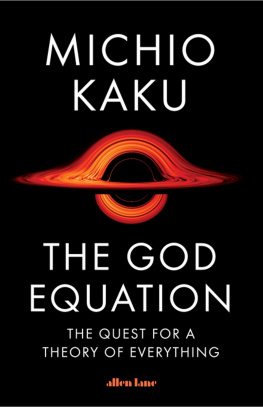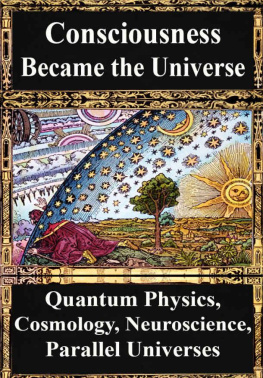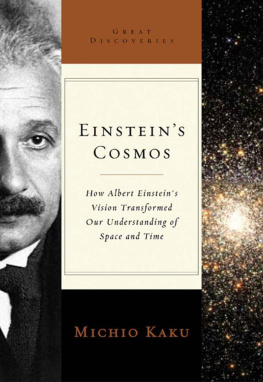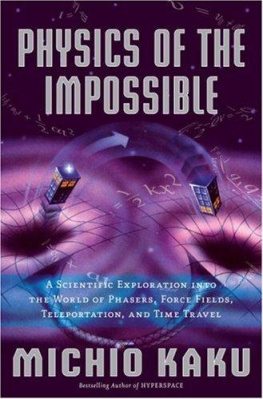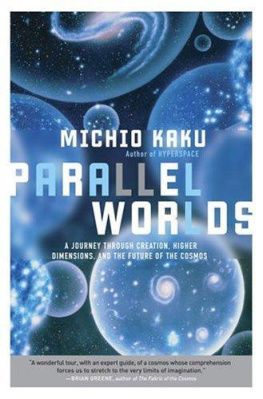Kaku - Parallel worlds a journey through creation, higher dimensions, and the future of the cosmos
Here you can read online Kaku - Parallel worlds a journey through creation, higher dimensions, and the future of the cosmos full text of the book (entire story) in english for free. Download pdf and epub, get meaning, cover and reviews about this ebook. City: New York, year: 2006;2016, publisher: Knopf Doubleday Publishing Group;Anchor Books, genre: Children. Description of the work, (preface) as well as reviews are available. Best literature library LitArk.com created for fans of good reading and offers a wide selection of genres:
Romance novel
Science fiction
Adventure
Detective
Science
History
Home and family
Prose
Art
Politics
Computer
Non-fiction
Religion
Business
Children
Humor
Choose a favorite category and find really read worthwhile books. Enjoy immersion in the world of imagination, feel the emotions of the characters or learn something new for yourself, make an fascinating discovery.

Parallel worlds a journey through creation, higher dimensions, and the future of the cosmos: summary, description and annotation
We offer to read an annotation, description, summary or preface (depends on what the author of the book "Parallel worlds a journey through creation, higher dimensions, and the future of the cosmos" wrote himself). If you haven't found the necessary information about the book — write in the comments, we will try to find it.
Kaku: author's other books
Who wrote Parallel worlds a journey through creation, higher dimensions, and the future of the cosmos? Find out the surname, the name of the author of the book and a list of all author's works by series.
Parallel worlds a journey through creation, higher dimensions, and the future of the cosmos — read online for free the complete book (whole text) full work
Below is the text of the book, divided by pages. System saving the place of the last page read, allows you to conveniently read the book "Parallel worlds a journey through creation, higher dimensions, and the future of the cosmos" online for free, without having to search again every time where you left off. Put a bookmark, and you can go to the page where you finished reading at any time.
Font size:
Interval:
Bookmark:
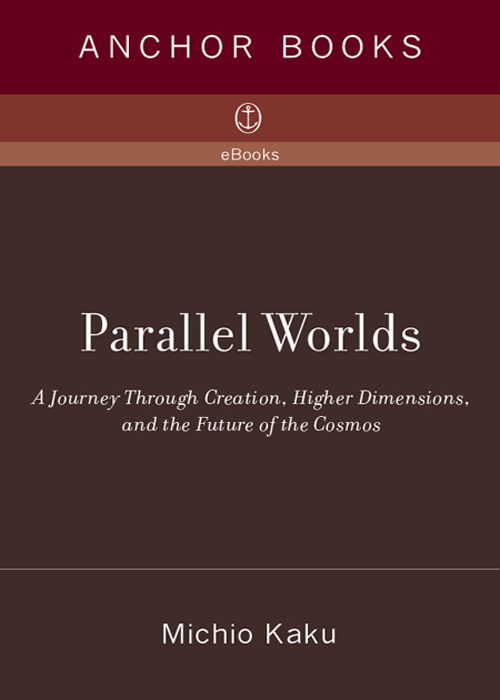
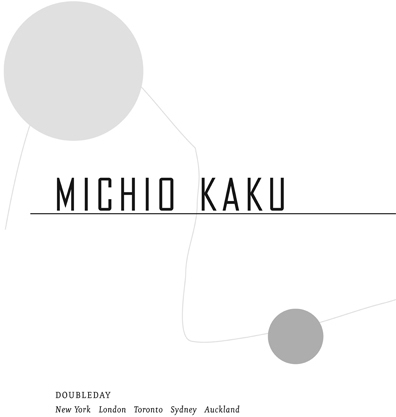

CONTENTS
This book is dedicated to my loving wife, Shizue.
ACKNOWLEDGMENTS
I would like to thank the following scientists who were so gracious in donating their time to be interviewed. Their comments, observations, and ideas have greatly enriched this book and added to its depth and focus:
Steven Weinberg, Nobel laureate, University of Texas at Austin
Murray Gell-Mann, Nobel laureate, Santa Fe Institute and California Institute of Technology
Leon Lederman, Nobel laureate, Illinois Institute of Technology
Joseph Rotblat, Nobel laureate, St. Bartholomews Hospital (retired)
Walter Gilbert, Nobel laureate, Harvard University
Henry Kendall, Nobel laureate, Massachusetts Institute of Technology (deceased)
Alan Guth, physicist, Massachusetts Institute of Technology
Sir Martin Rees, Astronomer Royal of Great Britain, Cambridge University
Freeman Dyson, physicist, Institute for Advanced Study, Princeton University
John Schwarz, physicist, California Institute of Technology
Lisa Randall, physicist, Harvard University
J. Richard Gott III, physicist, Princeton University
Neil de Grasse Tyson, astronomer, Princeton University and Hayden Planetarium
Paul Davies, physicist, University of Adelaide
Ken Croswell, astronomer, University of California, Berkeley
Don Goldsmith, astronomer, University of California, Berkeley
Brian Greene, physicist, Columbia University
Cumrun Vafa, physicist, Harvard University
Stuart Samuel, physicist, University of California, Berkeley
Carl Sagan, astronomer, Cornell University (deceased)
Daniel Greenberger, physicist, City College of New York
V. P. Nair, physicist, City College of New York
Robert P. Kirshner, astronomer, Harvard University
Peter D. Ward, geologist, University of Washington
John Barrow, astronomer, University of Sussex
Marcia Bartusiak, science journalist, Massachusetts Institute of Technology
John Casti, physicist, Santa Fe Institute
Timothy Ferris, science journalist
Michael Lemonick, science writer, Time magazine
Fulvio Melia, astronomer, University of Arizona
John Horgan, science journalist
Richard Muller, physicist, University of California, Berkeley
Lawrence Krauss, physicist, Case Western Reserve University
Ted Taylor, atomic bomb designer
Philip Morrison, physicist, Massachusetts Institute of Technology
Hans Moravec, computer scientist, Carnegie Mellon University
Rodney Brooks, computer scientist, Artificial Intelligence Laboratory, Massachusetts Institute of Technology
Donna Shirley, astrophysicist, Jet Propulsion Laboratory
Dan Wertheimer, astronomer, SETI@home, University of California, Berkeley
Paul Hoffman, science journalist, Discover magazine
Francis Everitt, physicist, Gravity Probe B, Stanford University
Sidney Perkowitz, physicist, Emory University
I would also like to thank the following scientists for stimulating discussions about physics over the years that have greatly helped to sharpen the content of this book:
T. D. Lee, Nobel laureate, Columbia University
Sheldon Glashow, Nobel laureate, Harvard University
Richard Feynman, Nobel laureate, California Institute of Technology (deceased)
Edward Witten, physicist, Institute for Advanced Study, Princeton University
Joseph Lykken, physicist, Fermilab
David Gross, physicist, Kavli Institute, Santa Barbara
Frank Wilczek, physicist, University of California, Santa Barbara
Paul Townsend, physicist, Cambridge University
Peter Van Nieuwenhuizen, physicist, State University of New York, Stony Brook
Miguel Virasoro, physicist, University of Rome
Bunji Sakita, physicist, City College of New York (deceased)
Ashok Das, physicist, University of Rochester
Robert Marshak, physicist, City College of New York (deceased)
Frank Tipler, physicist, Tulane University
Edward Tryon, physicist, Hunter College
Mitchell Begelman, astronomer, University of Colorado
I would like to thank Ken Croswell for numerous comments on the book.
I would also like to thank my editor, Roger Scholl, who has masterfully edited two of my books. His sure hand has greatly enhanced the books, and his comments have always helped to clarify and deepen the content and presentation of my books. Last, I would like to thank my agent, Stuart Krichevsky, who has ushered in my books for all these years.
PREFACE
Cosmology is the study of the universe as a whole, including its birth and perhaps its ultimate fate. Not surprisingly, it has undergone many transformations in its slow, painful evolution, an evolution often overshadowed by religious dogma and superstition.
The first revolution in cosmology was ushered in by the introduction of the telescope in the 1600s. With the aid of the telescope, Galileo Galilei, building on the work of the great astronomers Nicolaus Copernicus and Johannes Kepler, was able to open up the splendor of the heavens for the first time to serious scientific investigation. The advancement of this first stage of cosmology culminated in the work of Isaac Newton, who finally laid down the fundamental laws governing the motion of the celestial bodies. Instead of magic and mysticism, the laws of heavenly bodies were now seen to be subject to forces that were computable and reproducible.
A second revolution in cosmology was initiated by the introduction of the great telescopes of the twentieth century, such as the one at Mount Wilson with its huge 100-inch reflecting mirror. In the 1920s, astronomer Edwin Hubble used this giant telescope to overturn centuries of dogma, which stated that the universe was static and eternal, by demonstrating that the galaxies in the heavens are moving away from the earth at tremendous velocitiesthat is, the universe is expanding. This confirmed the results of Einsteins theory of general relativity, in which the architecture of space-time, instead of being flat and linear, is dynamic and curved. This gave the first plausible explanation of the origin of the universe, that the universe began with a cataclysmic explosion called the big bang, which sent the stars and galaxies hurtling outward in space. With the pioneering work of George Gamow and his colleagues on the big bang theory and Fred Hoyle on the origin of the elements, a scaffolding was emerging giving the broad outlines of the evolution of the universe.
A third revolution is now under way. It is only about five years old. It has been ushered in by a battery of new, high-tech instruments, such as space satellites, lasers, gravity wave detectors, X-ray telescopes, and high-speed supercomputers. We now have the most authoritative data yet on the nature of the universe, including its age, its composition, and perhaps even its future and eventual death.
Astronomers now realize that the universe is expanding in a runaway mode, accelerating without limit, becoming colder and colder with time. If this continues, we face the prospect of the big freeze, when the universe is plunged into darkness and cold, and all intelligent life dies out.
This book is about this third great revolution. It differs from my earlier books on physics,
Next pageFont size:
Interval:
Bookmark:
Similar books «Parallel worlds a journey through creation, higher dimensions, and the future of the cosmos»
Look at similar books to Parallel worlds a journey through creation, higher dimensions, and the future of the cosmos. We have selected literature similar in name and meaning in the hope of providing readers with more options to find new, interesting, not yet read works.
Discussion, reviews of the book Parallel worlds a journey through creation, higher dimensions, and the future of the cosmos and just readers' own opinions. Leave your comments, write what you think about the work, its meaning or the main characters. Specify what exactly you liked and what you didn't like, and why you think so.

